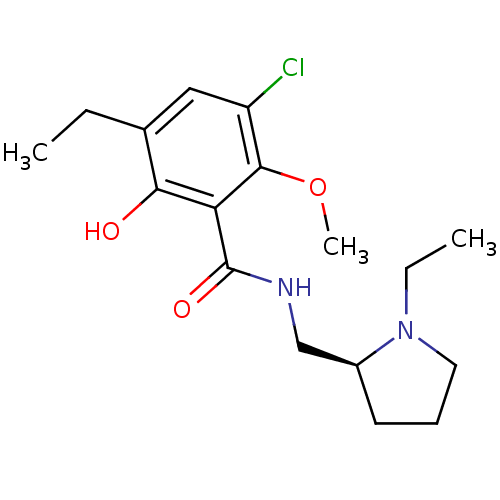Affinity DataIC50: 0.920nMAssay Description:Inhibition of [3H]spiperone binding to rat striatal dopamine receptor D2 was determined in vitroMore data for this Ligand-Target Pair
Affinity DataIC50: 0.920nMAssay Description:Tested in vitro for inhibition of [3H]spiperone binding to dopamine receptor D2More data for this Ligand-Target Pair
Affinity DataIC50: 0.920nMAssay Description:Antidopamine activity in vitro by ability to displace [3H]spiperone from rat brain striatal preparations.More data for this Ligand-Target Pair
Affinity DataIC50: 0.920nMAssay Description:In vitro ability to inhibit the binding of [3H]spiperone to dopamine receptor D2 in rat striatal membranes.More data for this Ligand-Target Pair
Affinity DataIC50: >1.00E+4nMAssay Description:Antagonist activity at DRD2 (unknown origin) expressed in HEK293T cells transfected with Galphai1-RLuc8 and gamma2-GFP10 assessed as inhibition of qu...More data for this Ligand-Target Pair

